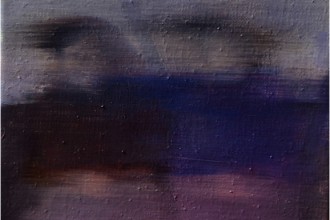Audrey Ryback travels to Chile in search of two of the twentieth-century’s greatest poets
Walking through La Chascona in Santiago, the giant shoe, the African masks, the long row of Matrioshka dolls aligned on the slim window sill and narrow creaky staircases all emanate a sense of its former proprietor’s eccentricity, as well as his love for collecting. La Chascona, literally “wild hair” in honour of his mistress’s notorious curls, is one of three houses designed and inhabited by the world-famous exiled diplomat and sea-loving communist, the Nobel Prize-winning master of love poems and icon of odes… the poet, Pablo Neruda.
This July, a hundred and nine summers after the poet’s birth and four decades after his death at age 69, the house at Cerro San Cristobal still stands as a testament to its master’s mind. Neruda constructed La Chascona with a poet’s diligence for detail. Tucked into the hillside of San Cristobal in Chile’s capital with what used to be (now drowned in a sea of smog) a stunning view of the Andes, every inch of the house, from the eclectic floor plan to the walls mapped with navigation charts, all serve one simple purpose: to inspire poetry, to remind him of his muse — the sea. On his writing desk beside pen and paper sits a sailing ship stranded in a bottle.
“We have exchanged practical and symbolic objects:†reminisces Parra, an equally eminent Chilean poet, “a Whitman for a López Velarde; a ceramic of Quinchamalà  for an Araucanian poncho; a pocket watch for a houseleek garden, butterflies, etc.”
I examine these trinkets amongst the collections lining shelves and walls and tables, but the objects do not speak to me the way they once did to Neruda. I cannot spot the ones he acquired from the man who claims that he has “shared Neruda’s life for years, as a neighbour, as a disciple, as a sporadic visitor”, the ones that have a symbolic, literary or simply emotional tie to the physicist, mathematician and poet with inverse initials: Nicanor Parra.
Parra, known as the Chilean Anti-Poet, is a revolutionary, a rebel politically as well as poetically. As he clarifies during a speech honouring Neruda: “…the intention of the antipoet [is] to jolt the moth-eaten foundations of worn-out ossified institutions.†Parra speaks true to his ambitions: the speech has little to do with traditional laudation. Instead, it explores poetry and the nature of poets. Parra jumps between prose and poetry, parentheses of inserted and tangential thoughts, original word games and phrases and rhymes and syntax. It is a meticulous mêlée of styles, strongly reflecting his poetic work: skilled and chaotic, colloquial and playfully profound.
In his Manifiesto, published in 1969, Parra gives insight into the ideas behind his revolution of Latin American poetry with a fresh wind of words, turbulent and with a strong, rebellious purpose. It is said to even have influenced beat poets such as Allen Ginsberg. In the opening stanzas of the Manifiesto, Parra proclaims: “Ladies and Gentleman, […] the poets have fallen from Olympus/ […] poetry is no longer a luxury for our generation, it is an article of primary necessity. /We cannot live without poetry.”
His style– subversive, edgy and colloquial, but also simple and honest– carries poems which he groups into categories such as: “Ecopoemsâ€, “Jokes to mislead the policeâ€, “Poems and Antipoemsâ€. And yet it is his Manifiesto that gives us a clear insight into Parra’s vision for poetry and the concepts underpinning his work: he advocates “the poetry of ideasâ€, but also poetry whose “sunbeams must arrive to everyone equally/ Poetry in reach of everybodyâ€. Parra’s poet is not “an alchemist†but simply “a man like every other man/ A mason who constructs his walls/ a constructor of doors and windowsâ€.
“so did the earth
make you,
onion
clear as a planet
and destined
to shine,
[…]
upon
the table
of the poor.â€
A houseleek garden was exchanged for a pocket watch, according to Parra. However, it seems that the bartering between the poets was not reserved exclusively to tangible objects. The tradesman relationship was not even centred purely on poetry. Their strongest bonds were formed in their ideologies, a sharing of a common, strident and political cause: communism.






